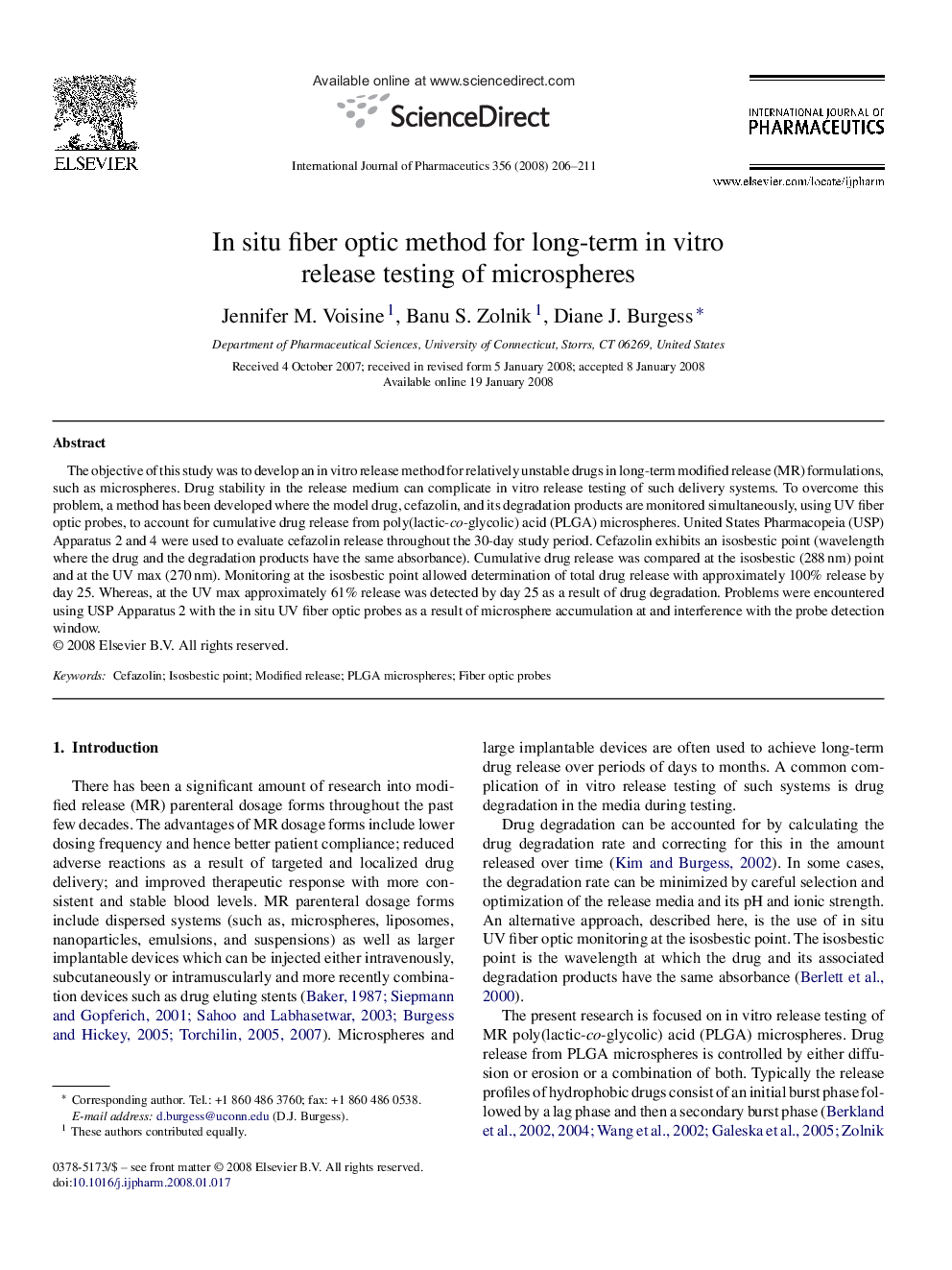| Article ID | Journal | Published Year | Pages | File Type |
|---|---|---|---|---|
| 2505450 | International Journal of Pharmaceutics | 2008 | 6 Pages |
The objective of this study was to develop an in vitro release method for relatively unstable drugs in long-term modified release (MR) formulations, such as microspheres. Drug stability in the release medium can complicate in vitro release testing of such delivery systems. To overcome this problem, a method has been developed where the model drug, cefazolin, and its degradation products are monitored simultaneously, using UV fiber optic probes, to account for cumulative drug release from poly(lactic-co-glycolic) acid (PLGA) microspheres. United States Pharmacopeia (USP) Apparatus 2 and 4 were used to evaluate cefazolin release throughout the 30-day study period. Cefazolin exhibits an isosbestic point (wavelength where the drug and the degradation products have the same absorbance). Cumulative drug release was compared at the isosbestic (288 nm) point and at the UV max (270 nm). Monitoring at the isosbestic point allowed determination of total drug release with approximately 100% release by day 25. Whereas, at the UV max approximately 61% release was detected by day 25 as a result of drug degradation. Problems were encountered using USP Apparatus 2 with the in situ UV fiber optic probes as a result of microsphere accumulation at and interference with the probe detection window.
